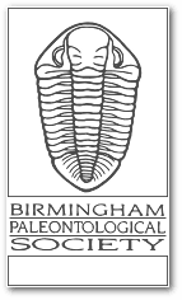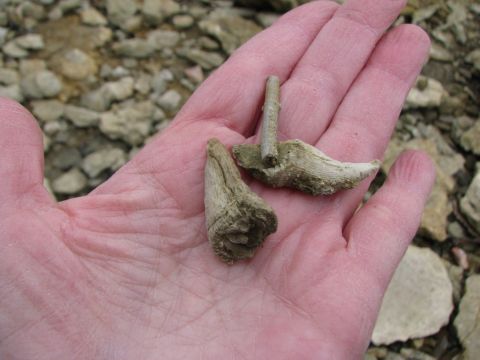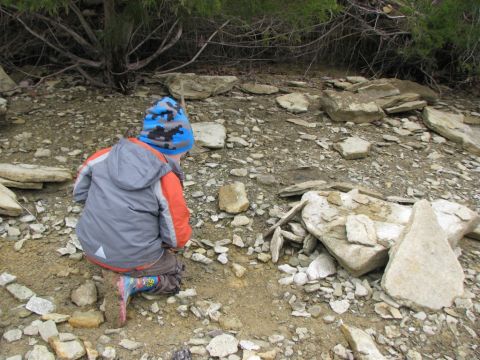Visitor
Paleozoic
November 27, 2020 - Pennsylvanian, Jefferson County, Al
On Friday, November 27, 2020, seven BPS members and guests went to a working strip mine in Jefferson County to collect fossils from the Pottsville formation of the Pennsylvanian period. The fossils collected today originated in a warm, steamy, oxygen-rich environment and grew to towering heights. Some of the fossils found are pith casts, formed when sediments filled the hollow center of a stem and later hardened/mineralized into rock. Other fossils are imprints and show beautiful details of fern-like foliage.
Some of the identified fossils found today include calamites, Lepidodendron, Stigmaria, Neuropteris, seed and cone fossils, brachiopods, gastropods and other inorganic remains (rain drops, fossilized waves and ripples). In one area, several cordaites with characteristic, strap-like leaves were spotted and photographed. Several huge stumps were identified but were either too high in the debris wall or way too heavy to get into a car today.
The weather was ideal for quarry collecting today. Early sun knocked the chill out of the air but clouds soon thickened which kept the temperature very pleasant. Participants observed social distancing but still managed to keep up with the fossils that were being found. All things considered, it seemed a very successful day.
March 21, 2020 - Pennsylvanian, Jefferson, AL
On Saturday, March 21, 2020, a baker’s dozen members and guests of BPS went to a site that we’d never visited. A tip from a member’s neighbor and a scouting outing was awarded by permission to collect in a strip mine in Jefferson County. The spoil piles that held fossils were from the Pennsylvanian period – Coal Age fossils that were formed as warm moist coastal swamps gave way to periodic flooding and sedimentation during continental drift changes. Interestingly, similarities between Pennsylvanian coal deposits in the Black Warrior Basin and those in South America indicate that they were once the same seam.
During this time, as changes occurred, fossils of both plants and animals were very well preserved. In the overburden piles where we collected, the majority of the fossils were lycopods, Calamites components, Cordaites impressions and fern-like plants. Many lovely lycopod leaf scar pieces were found, along with Calamites pith casts. There were numerous, large stigmaria casts, some with roots (hope some photos will demonstrate) and lots of lovely, very detailed fern leaf sections – most too fragile to collect except by photo. In addition, a few bivalve and limpet fossils were found – some collected and some photographed.
The day was overcast and chilly and the recent rain covered all the cars with sticky grey mud but the group was too busy collecting to worry about minor complaints. The area that was collected was huge – probably many more fossils to find there AND there’s a whole different area to explore. Sounds like another field trip!






